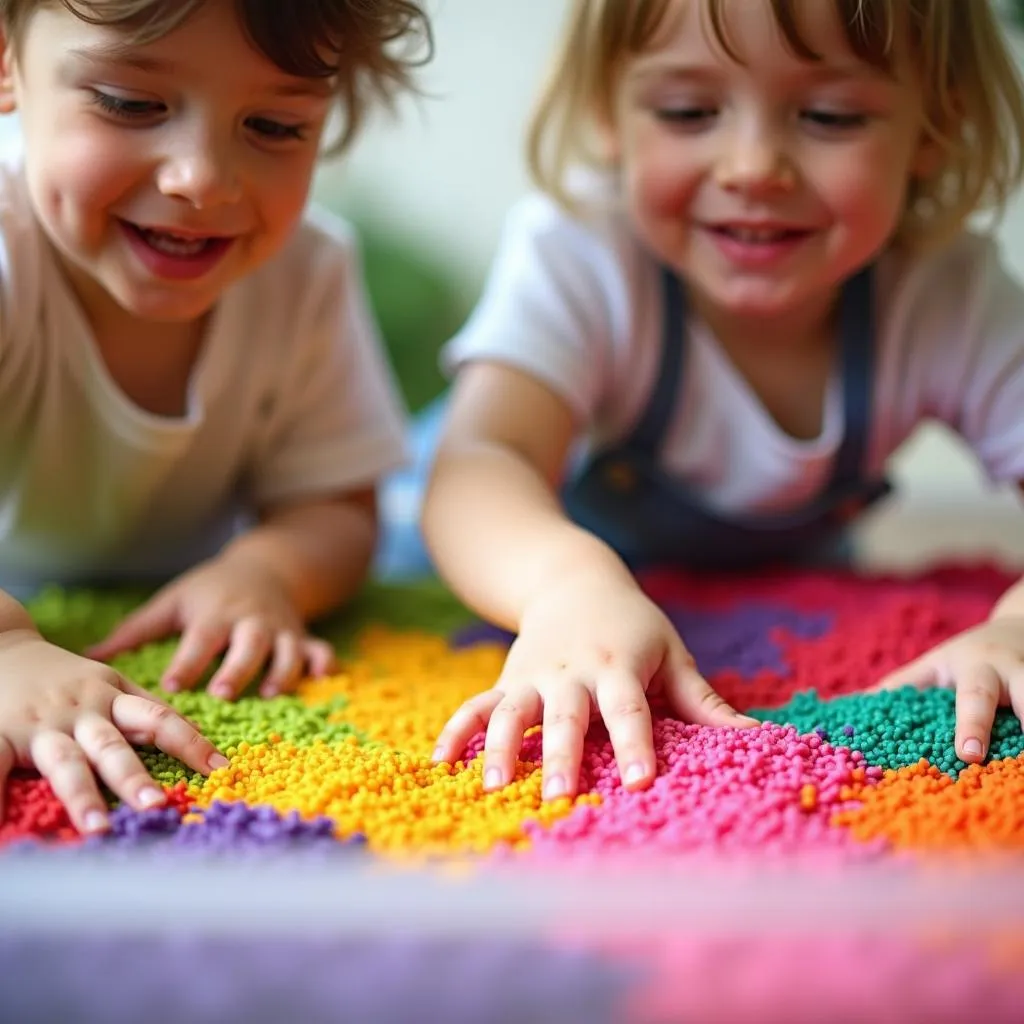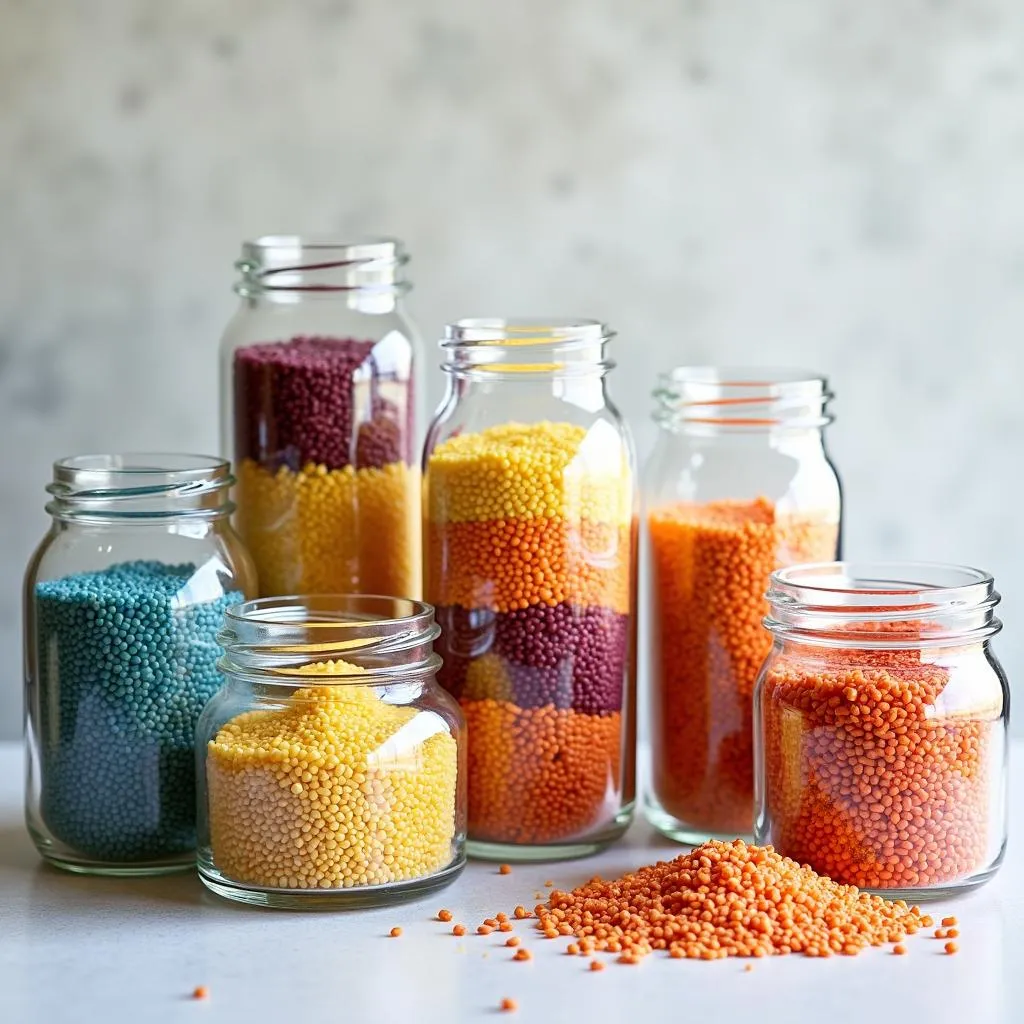Coloring rice is a fun and engaging activity that can be enjoyed by people of all ages. Whether you’re looking to create sensory play materials for children, add a festive touch to decorations, or simply explore your artistic side, colored rice offers endless possibilities. This comprehensive guide will walk you through the simple steps of coloring rice, provide helpful tips for achieving vibrant hues, and inspire you with creative ideas to make the most of your colorful creations.
Materials You’ll Need:
Before you begin your rice-coloring adventure, gather the following materials:
- White rice: Long-grain rice works best for coloring as it absorbs color more evenly.
- Food coloring: Liquid food coloring is recommended for vibrant and consistent results.
- White vinegar: Vinegar helps the color adhere to the rice grains.
- Rubbing alcohol (optional): Adding a small amount of rubbing alcohol can help the rice dry faster and prevent clumping.
- Ziploc bags or containers with lids: Use separate bags or containers for each color you plan to create.
- Baking sheet or tray: A flat surface for drying the colored rice.
- Parchment paper or wax paper: Lining your drying surface prevents the rice from sticking.
Step-by-Step Guide to Coloring Rice:
Step 1: Prepare Your Workspace:
Line a baking sheet or tray with parchment paper or wax paper. This will prevent the rice from sticking and make cleanup easier.
Step 2: Combine Rice and Coloring Agents:
Pour one cup of rice into a Ziploc bag or container. Add a few drops of food coloring to the bag. The amount of food coloring will determine the intensity of the color. Start with a few drops and add more if needed. Add a teaspoon of white vinegar to the bag. The vinegar helps the color adhere to the rice grains.
Step 3: Shake and Mix:
Seal the bag or container tightly and shake it vigorously for several minutes. Make sure the rice is evenly coated with the coloring mixture. If using multiple colors, repeat steps 2 and 3 for each desired color.
Step 4: Dry the Rice:
Spread the colored rice in a single layer on the prepared baking sheet or tray. Allow the rice to dry completely. This may take several hours or overnight, depending on the humidity levels in your area. To speed up the drying process, you can place the tray in a well-ventilated area or use a fan to circulate the air.
Tips for Vibrant and Long-Lasting Colors:
- Start with a small amount of food coloring and gradually add more until you achieve the desired shade.
- Use gel food coloring for more intense and concentrated colors.
- Add a few drops of rubbing alcohol to the coloring mixture to help the rice dry faster and prevent clumping.
- Avoid using too much liquid, as this can make the rice mushy.
- Store the colored rice in airtight containers to preserve its vibrancy.
 Children playing with colorful rice in a sensory bin
Children playing with colorful rice in a sensory bin
Creative Uses for Colored Rice:
Sensory Play:
Colored rice is an excellent material for sensory play activities, especially for young children. Fill a sensory bin with colored rice and add scoops, cups, and other toys to encourage exploration and imaginative play.
Arts and Crafts:
Use colored rice to create stunning artwork and craft projects. Glue the rice onto paper or cardboard to create mosaics, patterns, or even three-dimensional sculptures.
Decorations:
Add a pop of color to your home décor with colored rice. Fill clear vases, jars, or bowls with layers of different colored rice to create eye-catching centerpieces or decorative accents.
Party Favors:
Create unique and festive party favors by filling small bags or containers with colored rice. Add a personalized tag or ribbon for a special touch.
Educational Activities:
Colored rice can be incorporated into various educational activities. Use it for sorting, counting, pattern recognition, or even letter and number formation.
 Colorful rice used in various DIY home decorations
Colorful rice used in various DIY home decorations
Frequently Asked Questions (FAQs):
Q: Can I use brown rice for coloring?
A: While you can use brown rice, white rice is generally recommended as it absorbs color more evenly and results in more vibrant hues.
Q: How long does colored rice last?
A: When stored properly in airtight containers, colored rice can last for several months.
Q: Can I wash colored rice?
A: It’s not recommended to wash colored rice, as this can cause the color to fade or bleed.
Q: My rice feels sticky even after drying. What should I do?
A: If your rice feels sticky, spread it out on a baking sheet and bake it in a preheated oven at the lowest setting for about 15-20 minutes. This should help to dry out any remaining moisture.
Q: Can I add essential oils to colored rice?
A: Yes, you can add a few drops of your favorite essential oils to the coloring mixture to give the rice a pleasant scent.
Conclusion:
Coloring rice is a simple and enjoyable activity that offers endless creative possibilities. By following the step-by-step guide and helpful tips outlined in this article, you can easily transform ordinary rice into vibrant and versatile materials for sensory play, arts and crafts, decorations, and much more. So gather your supplies and unleash your inner artist with the colorful world of colored rice!
Need help with your next creative project? Contact us at 0373298888 or email [email protected]. Our team is available 24/7 to assist you! We’re located at 86 Cầu Giấy, Hà Nội.

